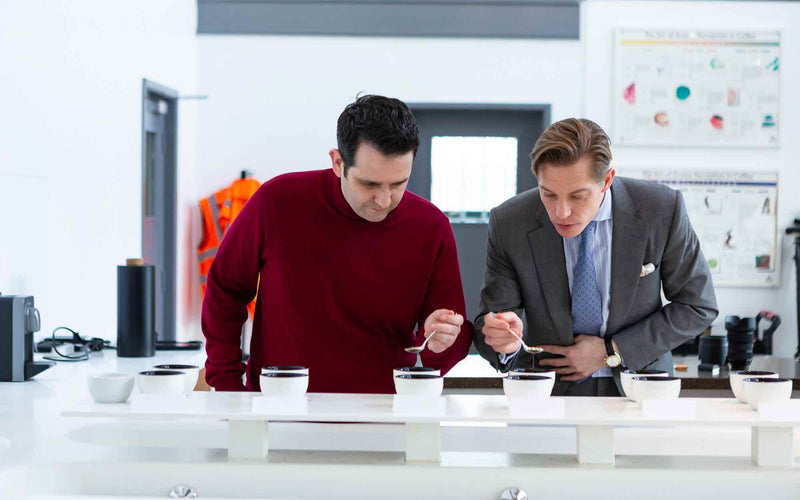The fussiest coffee connoisseurs have one thing in common with those who dislike coffee altogether – they can’t stand the unpleasant bitterness of cheap coffee. However, those discerning coffee drinkers understand that bitterness in coffee isn’t always bad. In fact, it’s one of the drink’s most distinguishing characteristics. But there’s a big difference between “bad” bitterness, that harsh, too-bitter flavour common in commodity coffee, and the “good” bitterness of specialty coffee that’s balanced by optimal levels of sweetness and acidity. That difference often comes down to the variety of bean: Robusta vs Arabica.
It’s useful to understand why Arabica beans are superior to the only other variety of bean widely used in consumer coffee – Robusta beans – and it has a lot to do with bitterness. Those “bad” bitter flavours that dominate in cheap coffee come from Robusta beans, which are blended in with Arabica. One of the easiest ways for a coffee drinker to avoid unpleasantly bitter coffee is to always opt for 100-percent Arabica beans, preferably Specialty Grade Arabica.
ROBUSTA VS ARABICA
Robusta and Arabica are quite different as plants, as beans and as prepared coffee. Arabica plants are much fussier, thriving only at high altitudes, in rich soil, with the right balance of sunshine and shade. This makes them expensive. Robusta is easier and cheaper to grow than Arabica, yet it makes up just 25 to 30 percent of the global coffee crop due to lower demand.
In terms of flavour, Robusta is much more bitter than Arabica, a result of it having approximately twice as much caffeine and half as much sugar. It’s less acidic and less complex, with a weaker aroma. Arabica is sweeter, brighter, less bitter and much more pleasant to drink. Most coffee drinkers describe Robusta as strong, harsh, thick and often having a burnt, overly bitter taste. Those who think all coffee has those negative characteristics have probably not tasted specialty coffee, which does not contain any Robusta beans.
WHY DRINK ROBUSTA?
At Difference Coffee, we suggest avoiding Robusta in favour of 100-percent Arabica every time. Robusta is simply not good coffee, and we never, ever source it. So why do people drink Robusta?
While it’s widely grown, most of the world’s Robusta crop becomes instant coffee. The rest goes into lower-quality blended coffee, usually as a small percentage of the blend. This isn’t done for taste reasons, but as an inexpensive filler to lower the cost of the blended coffee. Whether Robusta is just 5 percent or up to 30 percent of a blended coffee, its unpleasant bitterness is always noticeable. It dominates over the “good” bitter notes, sweetness and acidity of the Arabica portion of the blend.
If you’re not already checking the contents and origins of the coffee you buy, looking for the “100-percent Arabica” promise is a good place to start.






